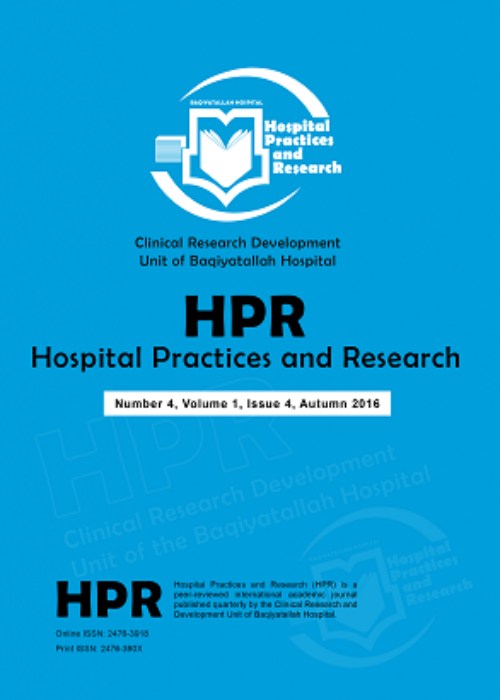Natural Based Anticancer Drugs and Their Worthiness
Author(s):
Abstract:
With the prevalence of every type of cancer increasing globally, the inability to treat and the severe side effects caused by chemotherapy and radiotherapy are some of the biggest problems facing cancer patients and their physicians.1
Many herbal medicines have replaced their chemical rivals; for example, emetine lost its ground to metronidazole as an amoebicidal agent, and digoxin has given its place to ACE inhibitors for treating congestive heart failure. Their use has particular importance in some areas due to the widespread side effects of synthetic drugs, especially in the treatment of incurable diseases such as cancer.2
It is noteworthy that several natural anticancer agents are provided by lower organisms. For example, the anti-hyperlipidemic agent lovastatin comes from Aspergillus terreus, the immunosuppressant cyclosporin A is derived from Beauveria nivea, and some antibiotics (bleomycin, dactinomycin, daunorubicin, doxorubicin, mitomycin, plicamycin, streptozocin) also fall into this category; however, other higher plants have produced more complicated contributions as secondary metabolites. Among those, the antileukaemic alkaloids vinblastine and vincristine which are obtained from Catharanthus roseus are noted as earlier instances. Other popular and important plant components for use as anticancer agents are etoposide and teniposide which are isolated from Podophyllum peltatum and are effective against many types of tumors, and taxoids that are obtained from crude extracts of the bark of the Taxus brevifolia and are significantly active against ovarian cancer, advanced breast cancer, small and non-small cell lung cancer. Furthermore, these cases should be noted: Shikonin (from Lithospermum erythrorhizon), curcuminoid (from Curcuma longa), camptothecin (from Camptotheca acuminate), and ingenol mebutate (from Euphobia peplus), Trastuzumab emtansine (Kadcyla) which is an antibody conjugated to a synthetic derivative of the cytotoxic principle of the Ethiopian plant Maytenus ovatus and used to treat breast cancer.3
Although more than half of the anticancer compounds used to treat cancer are obtained from plant sources or marine and microorganisms, it seems that there is still little knowledge about the power of natural resources in the face of incurable diseases such as cancer.4 Finally, the fewer side effects, availability, and lower cost of drugs obtained from plants compared to synthetic samples, especially for cancer patients who have weakened immune systems, make alternative medicine a very important issue. Expanding mans knowledge on the discovery and use of these natural compounds requires a greater investment by related companies and more attention from the academic community and researchers.
Many herbal medicines have replaced their chemical rivals; for example, emetine lost its ground to metronidazole as an amoebicidal agent, and digoxin has given its place to ACE inhibitors for treating congestive heart failure. Their use has particular importance in some areas due to the widespread side effects of synthetic drugs, especially in the treatment of incurable diseases such as cancer.2
It is noteworthy that several natural anticancer agents are provided by lower organisms. For example, the anti-hyperlipidemic agent lovastatin comes from Aspergillus terreus, the immunosuppressant cyclosporin A is derived from Beauveria nivea, and some antibiotics (bleomycin, dactinomycin, daunorubicin, doxorubicin, mitomycin, plicamycin, streptozocin) also fall into this category; however, other higher plants have produced more complicated contributions as secondary metabolites. Among those, the antileukaemic alkaloids vinblastine and vincristine which are obtained from Catharanthus roseus are noted as earlier instances. Other popular and important plant components for use as anticancer agents are etoposide and teniposide which are isolated from Podophyllum peltatum and are effective against many types of tumors, and taxoids that are obtained from crude extracts of the bark of the Taxus brevifolia and are significantly active against ovarian cancer, advanced breast cancer, small and non-small cell lung cancer. Furthermore, these cases should be noted: Shikonin (from Lithospermum erythrorhizon), curcuminoid (from Curcuma longa), camptothecin (from Camptotheca acuminate), and ingenol mebutate (from Euphobia peplus), Trastuzumab emtansine (Kadcyla) which is an antibody conjugated to a synthetic derivative of the cytotoxic principle of the Ethiopian plant Maytenus ovatus and used to treat breast cancer.3
Although more than half of the anticancer compounds used to treat cancer are obtained from plant sources or marine and microorganisms, it seems that there is still little knowledge about the power of natural resources in the face of incurable diseases such as cancer.4 Finally, the fewer side effects, availability, and lower cost of drugs obtained from plants compared to synthetic samples, especially for cancer patients who have weakened immune systems, make alternative medicine a very important issue. Expanding mans knowledge on the discovery and use of these natural compounds requires a greater investment by related companies and more attention from the academic community and researchers.
Language:
English
Published:
Hospital Practices and Research, Volume:2 Issue: 1, Winter 2017
Page:
24
magiran.com/p1665042
دانلود و مطالعه متن این مقاله با یکی از روشهای زیر امکان پذیر است:
اشتراک شخصی
با عضویت و پرداخت آنلاین حق اشتراک یکساله به مبلغ 1,390,000ريال میتوانید 70 عنوان مطلب دانلود کنید!
اشتراک سازمانی
به کتابخانه دانشگاه یا محل کار خود پیشنهاد کنید تا اشتراک سازمانی این پایگاه را برای دسترسی نامحدود همه کاربران به متن مطالب تهیه نمایند!
توجه!
- حق عضویت دریافتی صرف حمایت از نشریات عضو و نگهداری، تکمیل و توسعه مگیران میشود.
- پرداخت حق اشتراک و دانلود مقالات اجازه بازنشر آن در سایر رسانههای چاپی و دیجیتال را به کاربر نمیدهد.
In order to view content subscription is required
Personal subscription
Subscribe magiran.com for 70 € euros via PayPal and download 70 articles during a year.
Organization subscription
Please contact us to subscribe your university or library for unlimited access!



